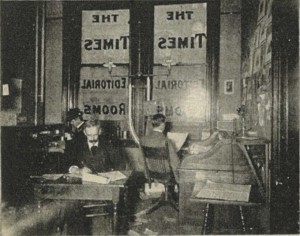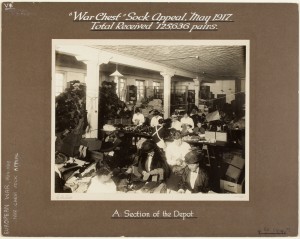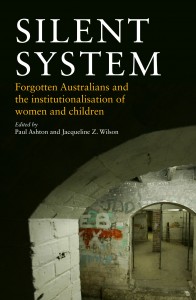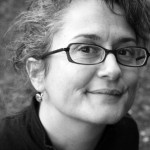 I must admit to a sense of dismay when I read this week that the NSW Government, having announced its intention to take the Powerhouse Museum to Parramatta, is going to sell the building to developers. As well as seeming hasty – the new site at Parramatta hasn’t been picked yet – turning it into apartments strikes me as a terrible waste of an iconic site, and represents the loss of an important piece of the city’s cultural and built heritage.
I must admit to a sense of dismay when I read this week that the NSW Government, having announced its intention to take the Powerhouse Museum to Parramatta, is going to sell the building to developers. As well as seeming hasty – the new site at Parramatta hasn’t been picked yet – turning it into apartments strikes me as a terrible waste of an iconic site, and represents the loss of an important piece of the city’s cultural and built heritage.
I love the Powerhouse. When I was working at Eskbank House in Lithgow the Powerhouse’s Regional Services team supported me while I learned how to manage a museum, guided me through conservation issues and (literal) disaster, and took me in for two weeks as an intern to show me the ropes. I’ve since produced work for the Migration Heritage Centre, which is based there. It’s been really terrible to hear how many staff have been made redundant while this government has waged war on the public service and the state’s cultural institutions. It seems the Powerhouse has lost a disproportionate number of people (including the Regional Services team) and I know they took a huge amount of knowledge capital with them when they left.
Still, while I think it is hasty to announce a site is for sale before the occupants have a new home to go to, and I can’t help but be fearful about losing even more of the Powerhouse’s amazing knowledge bank, I’m no longer sure that it’s a bad thing for the institution to leave the CBD. The building is bursting at the seams, as is its annexe and repository at Castle Hill. The displays look outdated and it would be very hard to reconfigure them, given the limitations of the building. The process of moving and making modern and innovative displays in a new building is a huge opportunity – it will generate a rush of energy that will create work and provide new skills and jobs for all sorts of people (and maybe even myself).
Also, it would be in Western Sydney. I know it’s probably no coincidence that a Deloitte report for the Sydney Business Chamber and Liverpool, Parramatta and Penrith Councils was released this week, as debate over the Parramatta site and the Powerhouse relocation swirls – governments and their lobbyists are so often lock-step when they are softening us up for unpalatable truths – but read this:
[The report found] taxpayers spend more than four times more money on subsidising each visitor to venues in Sydney’s CBD compared with western Sydney.
Taxpayers spent an estimated $112.50 on each visitor to the Australian Museum and $74.93 for the Sydney Opera House. The subsidy for each visitor to the Riverside Theatres was $14.15 and Joan Sutherland Performance Arts Centre a mere $6.20.
The report recommends spending $300 million on cultural infrastructure in western Sydney over the next five years and a doubling of the state government arts funding in the region.
It recommends major upgrades to existing venues such as Parramatta’s Riverside Theatres, establishing a new cultural facility in Liverpool and a permanent external performing arts venue.
More provocatively, the report suggests two major tertiary institutions – the Australian Film, Television & Radio School and National Arts School – should relocate to western Sydney. It also backs the already-mooted move of Powerhouse Museum from its present site in inner-city Ultimo.
Apart from two historic homes situated in western Sydney, no major state cultural institution is based in the region.
I live even further west than the western suburbs, so feel this cultural divide quite keenly. As I’ve become involved with the Parramatta Female Factory Project I’ve also been getting to know Parramatta better. It’s a great place, with a lovely CBD, just 30 minutes by train from the city centre. It is enormously rich in heritage, and deserves better than it gets in terms of arts funding. It will mean a lot, to a lot of people, to have a big institution in the geographical centre of this great city – the last I heard, that geographical centre was some ways to the west of even Parramatta, but I am sure we westies would all much rather head to Parramatta than fight our way into the CBD. While it’s upsetting that an institution with a history that stretches back to 1879 will be forced to relocate, the Powerhouse only moved to its current site in 1988 (in ‘Stage One’ of a big redevelopment). Back then the Powerhouse had a name for innovation and excitement. I think the western suburbs deserve to have a bit of that. Stage Two, head west?
This weekend some of my twitter mates have asked whether the government would consider taking an eastern suburbs hospital and relocating it west. My first response to that was to nod my head and tut … and then I remembered. In the 1980s and 1990s, Neville Wran, the same premier who opened the Powerhouse on its new site, began moving hospital services into the western suburbs. This work was continued by the Greiner Government, well into the 1990s. As a result, the Royal Alexandra Hospital for Children moved from Camperdown and became Westmead Children’s Hospital, where it serves western Sydney and beyond, with distinction. We really couldn’t do without it. Hospitals like South Sydney Women’s Hospital, Crown Street Hospital and St Margaret’s Public were all rolled into other services, providing funding that was released to support hospitals and birthing units in the west. In the 1980s, if you lived in the Blue Mountains or Penrith and got cancer or suffered kidney failure you had to go to Royal North Shore, but our dogged local pollies convinced their cabinet colleagues to fund renal, cardiac and oncology units in Nepean and Liverpool. I know there is still a disparity in hospital funding but Nepean and Liverpool hospitals are no longer regional outposts. They are fully-functioning tertiary institutions that conduct research, attract talented staff, support smaller local hospitals and community health measures, and provide care that is close to home.
So, in truth, eastern suburbs hospitals were taken west, and the west, and its people, is better for it in innumerable ways. I am quite sure that moving the Powerhouse would have the same effect. Of course it would be terrible if there was no extra funding allocated for this move. We need more money overall for the arts, not a simple shift of dollars from east to west. I also hope the Ultimo site is retained – it’s a special building and would work well as a ‘Powerhouse lite’ to serve time-poor tourists and tempt the inquisitive further westward. However, I’m looking forward to being able to cut 45 minutes off every trip I take to catch some culture, by getting off the train at Parramatta.
The future of the site was discussed by Philip Thalis, a wise architect, in The Conversation on Monday 2 March. He’d like to keep a city Powerhouse too.






